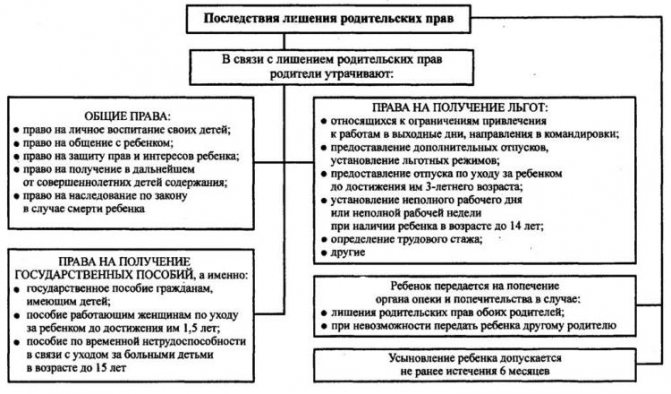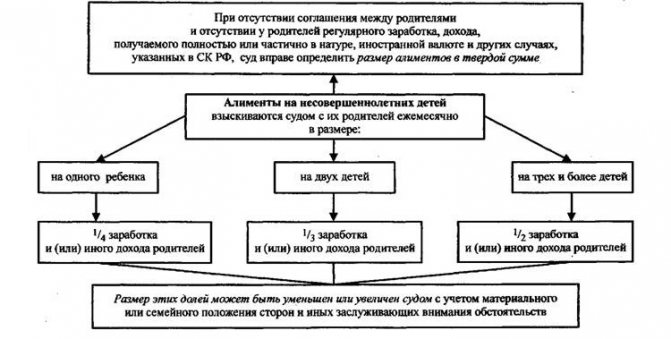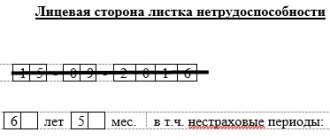Main options for providing a report on the use of alimony
A child support provider who wants to have information about expenses for a child can use one of the methods suggested below to obtain a report.
| Options | A comment |
| Agree with the other parent to provide a report. | The point is that in this case everything rests on the voluntary consent of the alimony recipient, on his moral principles, and not on legal grounds. In other words, it is impossible to force him (her), if he refuses, to report where the alimony allowance is spent. Neither the court, nor the bailiff service, nor other government bodies will be able to help the alimony provider in such a situation. |
| Conclude an alimony agreement with a notary and include a section on the report in it, or change an already concluded agreement and include a section on the report in it. | This is the only legal way to require complete information about all expenses for a child. In legal force, an alimony agreement is equivalent to a writ of execution, therefore, an alimony recipient who refuses to report expenses can be forced to do so through the bailiff service. It should also be said that in case of inappropriate monetary expenses, the alimony provider has the opportunity to compensate for the damage he has suffered through the court, proving the fact of inappropriate use of money. Of course, this method has one serious drawback: the ex-husband or ex-wife may not want to enter into an alimony agreement on such terms. |
| Get through the court to have half of the alimony transferred to a special bank account. | This option should be resorted to in the simultaneous presence of 2 circumstances:
In case of a positive decision of the court, the alimony payer will have to transfer up to 50% of the alimony to an account registered in the name of the minor, and transfer the rest of the alimony to the disposal of the other parent. The second parent can manage money from the account only with the permission of the state guardianship agency. |
Responsibility for misuse of alimony
In order to bring to justice a child support recipient who is wasting money for other purposes, it is necessary to have convincing evidence of his guilt. The presence of guilt may be indicated by the facts described in the table.
| Who or what should you pay attention to? | Facts that may indicate embezzlement |
| The child, his condition and appearance | The alimony payer should pay attention to:
|
| Alimony recipient, his behavior and appearance | In this case, you need to make sure that the recipient of alimony payments:
In addition, such facts as, for example, a magnificent appearance due to the use of cosmetics, visits to the hairdresser, etc., purchases of household appliances or clothes in the absence of any income, may indirectly indicate waste. |
Property
This responsibility may include:
- In payment of a one-time fine.
- Full compensation for losses. It should be noted that the alimony recipient does not have the right to demand that the debt be offset against alimony that will be paid in the future. This directly follows from the Family Code. Consequently, the recipient of alimony will have to return the wasted money to the payer.
- In payment of a penalty.
The above measures of responsibility are applied by the court or bailiffs in relation to the culprit only when the obligation to report was enshrined in the alimony agreement, and the agreement specified specific types of responsibility for the lack of a report. In other cases, you can only compensate for the losses incurred through the court and ensure that up to half of the monthly alimony allowance is transferred to the account of the minor child.
The specifics of legal proceedings in case of violation of the terms of an alimony agreement and in other situations are described below.
Type of legal proceedings – claim. The choice of court (magistrate or district court) depends on the amount of property damage. If it is less than 50,000 rubles, then you need to declare your claims to a magistrate, more than 50,000 rubles. - to the district court. As for jurisdiction, such claims are heard in the courts located in the place where the defendant is registered or actually resides, i.e. alimony recipient.
The difficulty for the plaintiff is that he has the responsibility to prove that the defendant spent alimony money not on the needs of the minor, but on other purposes. Before submitting an application to the court, it is very important to draw up a written demand addressed to the recipient of alimony support for the provision of a report, in which you need to indicate the deadline for a response (30 days) and threaten to go to court. This requirement is sent to the alimony recipient by registered mail, which must be accompanied by an inventory of the contents and a notice. If one of the goals of the claim is to change the procedure by which alimony is paid, i.e. their distribution in the future in the proportion of 50% to the second parent and 50% to the minor’s account, you must open an account in advance and write its details in the statement of claim.
The statement of claim is written in 3 copies, two of which are handed over to the defendant and the judge, and one remains with the plaintiff. You need to write in it:
- Full name of the court, postal address.
- Information about the plaintiff and defendant. Full name, postal address and cell phone number are enough.
- Information about the marriage (where it was concluded, when the divorce occurred).
- Information about minor children (how many there are, what age they are, their full names, details of birth certificates).
- Grounds for payment of alimony. If this is a judicial act, then which court issued it, when, in what case, what amount of alimony was awarded. If this is an alimony agreement, then which notary certified, when it was, what amount of alimony was established.
- A list of available evidence showing how the child support recipient illegally spent money provided for the maintenance of a minor child.
- A mention that the plaintiff has a certificate from the bailiff stating that he has no alimony debts.
- List of requirements.
- List of documentation attached to the application.
- Painting and date.
How can you convince the judge, what evidence will help turn the trial in favor of the applicant? The most commonly used evidence is:
- Refusal in writing to a request to provide a report or failure to respond to the specified request.
- A document confirming that the state guardianship agency has examined the conditions in which the child lives.
- Statements from the child support recipient's bank account.
- Information about the defendant’s existing loans.
- Evidence of large expenditures of funds immediately after the transfer of alimony benefits.
- A court decision or agreement on the basis of which alimony is paid.
- Information about inappropriate expenses from correspondence with the defendant by email or on social networks or through messenger applications.
- Any information that the defendant is negligent in fulfilling parental responsibilities.
- Information about the total amount of alimony paid to the defendant, for example, providing an account statement.
State duty is not paid. This is due to the fact that the plaintiff is defending the rights of a young child to receive financial support in full. Some courts may require payment, citing the fact that this is a property claim in which the subject of the dispute can be assessed, but this does not need to be agreed, since the purpose of the claim is not to obtain property from the defendant, but to protect the child.
Courts, as a rule, support the plaintiff’s position only when there is direct evidence of the defendant’s guilt, i.e. non-targeted expenses confirmed by account statements or checks. Witness testimony is usually not enough if the alimony recipient leads a law-abiding and socially approved lifestyle.
It should also be taken into account that if the defendant violates the terms of the alimony agreement, the judge will not apply other measures of property liability other than those prescribed in the agreement. The exception is cases when his (her) actions contain signs of a crime or an administrative offense. Also, the judge is not bound by the rule on transferring 50% of the alimony allowance to the account of a minor child, but may decide to transfer a smaller amount as a percentage.
Therefore, in any case, it is necessary to go to court hearings, adhere to your point of view and defend it, relying on evidence. Until the court decision comes into force, it is not binding, and it can be challenged in a higher court.
Administrative
Unfortunately, this form of liability is not provided for by Russian legislation on administrative offenses.
Transfer of the child to the child support payer
The transfer is carried out by court decision and may involve depriving the offending parent of his rights in relation to the minor child. The court can terminate parental rights only in strictly limited cases. These include:
- Failure to fulfill the duties of caring for a minor, for example, failure to provide for his nutrition, health, education and entertainment.
- Beatings, psychological terror and other cruel treatment of minors.
- Excessive alcohol consumption, which has become chronic and confirmed by doctors.
- Involvement in playing cards, sports betting and gambling, forced begging or earning money through prostitution.
- Committing an intentional criminal offense against a child, confirmed by a verdict.
- Painful craving for drugs, officially confirmed by a doctor.

Now it is necessary to indicate several key factors that you should pay special attention to when preparing for legal battles with the defendant:
- The decisive circumstance that the judge will focus on is the interests of the child. Therefore, it is necessary to describe in as much detail as possible why the alimony recipient cannot perform his duties better than the plaintiff.
- The opinion of the minor himself, especially if he is over 10 years old, will also not be ignored, so it is advisable to have a good relationship with the child. It’s great if the child’s attachment to the plaintiff is documented by a third party, for example, in a psychologist’s report.
- During the hearings, the judge examines in detail the identities of the parties. This leads to the following conclusion: in order to increase your chances, you need to inform the judge about the negative character traits of the defendant, about the offenses he has committed, bad habits, etc. Of course, these should not be unfounded accusations, but statements supported by evidence based on documents or the words of eyewitnesses.
- The order in the house, the presence of household amenities (hot water, sewerage, heating) and free space for rest, activities and games of the minor. Representatives from the state guardianship agency will definitely come to inspect the housing of both the plaintiff and the defendant, and at the end of the inspection they will draw up a report that can be used by the defendant against the applicant.
- Confirmation from relatives (written or oral in court) that they will provide assistance in caring for a young child while the plaintiff is at work or on a business trip.
- Material security. It should be noted that this factor is not that important. If the alimony provider is superior to the alimony recipient only by the criterion of material security, there is an almost one hundred percent probability that the child will not be given to him (her).
You also need to stock up on evidence, which includes:
- Testimony of persons intimately familiar with both sides of the process.
- Alimony agreement or writ of execution.
- Documents certifying the right to housing (certificate or extract).
- Birth certificate of a minor.
- Information about the amount of earnings (tax return, certificate 2-NDFL).
- Information about work schedule.
- Characteristics obtained from the child’s educators or teachers, as well as from the employer.
- Evidence of the defendant's unlawful behavior, such as a criminal record or prior offenses; bank account statement; medical documents about the presence of mental illnesses, drug addiction.
These types of trials are among the most complex because the judge must review and evaluate a significant amount of information, which is often quite contradictory. The likelihood of success increases only if the behavior of the defendant clearly violates the law or moral standards, and at the same time the plaintiff appears before the court to be impeccable from a legal and moral point of view.
Also keep in mind that by taking the child with you, the plaintiff’s obligation to pay child support is canceled.
What to do if your ex-spouse makes small payments?
In order to build the correct procedure for increasing alimony benefits, it is necessary to understand on what basis these benefits were paid . There may be 3 options here:
- Alimony was paid voluntarily by oral agreement of the parties.
- Payments were made in accordance with a written agreement concluded between the parents and certified by a notary.
- Alimony was paid by court order.
If payments were made on the basis of an oral agreement, then you should also try to negotiate an increase in them verbally . If you present evidence of the need to increase payment, perhaps the alimony payer will not be against increasing the amount of alimony.
If alimony was paid on the basis of a written, notarized agreement, then in order to increase the amount of benefits, the parents will need to conclude a new agreement.
In a situation where payments were made by court decision, but their amount is insufficient to support the child, you can try to negotiate with the alimony payer for an additional amount. However, it is not always possible to reach an agreement peacefully. But if the husband pays little alimony, what to do? In this case, the way out of the situation may be to file a lawsuit in court.
Court as a way to resolve the issue
In order to file a claim in court, you must first collect all the necessary documents. There is no clear list of documents, since each situation is individual, but there is a basic list of papers that will definitely be useful for initiating legal proceedings, these are :
- A copy of the recipient's passport.
- Child's birth certificate.
- Marriage/divorce certificate.
- Documents that confirm expenses for the child.
- Certificate of income of the alimony recipient.
- Certificate of family composition.
- Statement of claim.
Before transferring documents to the judge, you will need to pay a state fee . With a receipt for payment and all documents, you can submit the case for review.
After the claim is considered, a decision and a writ of execution will be issued on it. According to this writ of execution, the alimony payer will have to pay benefits.
Indexation and its impact on the amount of payments
If the husband pays small alimony as a share of his salary, then the court can help in this situation. Most likely, they will oblige the child’s father to pay a fixed amount. When alimony is paid in a fixed amount, then with an increase in the cost of living, their amount should change proportionally . This issue is covered in detail in Article 117 of the RF IC and Federal Law-229 “On Enforcement Proceedings”, Article 102.
Alimony payments, which are calculated as a percentage of wages, are not subject to indexation. In this case, the employer indexes the salary, and benefits are indexed accordingly.
Since 2021, changes have been made to the indexation law. In connection with these changes, alimony, which is paid in a fixed amount, should increase in proportion to the increase in the cost of living. Before this, indexation was carried out in proportion to the increase in the minimum wage.
General information about the indexation of alimony is contained in a separate article.
Previously, indexation was carried out at the request of the recipient of alimony, but from 2021 this procedure must be carried out by organizations (employer, bailiff service) without an application . That is, if alimony is paid in a fixed amount, in order to index it, the recipient does not need to take any special actions.
Tracking child support through a personal bank account
In a situation where the defendant does not clearly neglect the norms of law or morality in relation to a minor, does not want to report on alimony, but sometimes spends alimony money on himself or other persons, he will not be able to take the child away. The only way to influence is to change the order of transfer of alimony benefits. If successful, 50% or more of the alimony benefit is disposed of by the recipient, and the rest in the minor’s account is disposed of by the recipient, but only with the permission of the state guardianship agency.

A change in the payment procedure is made through the district court located in the place of residence or registration of the alimony recipient. No state duty is paid. The algorithm of actions is as follows:
- We open an account in any banking institution in the name of a minor child.
- We collect evidence that there were inappropriate expenses for alimony, for example: Information from correspondence in email, messenger applications, SMS.
- An extract from the defendant’s bank account where alimony was transferred. If the defendant does not voluntarily provide this information, you can petition the judge at the hearing to have a court request for an extract sent to the bank.
- Testimony of a minor.
- Receipts or checks from supermarkets, stores.
- Audio recordings or video recordings.
- Testimony from neighbors or relatives.
Features of the legal regulation of alimony obligations
The obligation to provide alimony arises only for 2 reasons:
- Notarial agreement.
- An order from a magistrate or a decision from a district court.
The agreement is convenient in that it is a flexible way to establish the nuances of the alimony obligation, in particular, to prescribe the amount of payments (the only exception: they should not be lower than the amount that could be assigned by the court), determine the frequency of payments, and establish the types and amounts of responsibility for the parties. It can also specify the validity period of the agreement and secure payment methods (shares, share in the business, property assets, cash payments, etc.).
In addition, the advantage of the agreement is that it can be changed at any time at the request of both parties or terminated altogether. An additional guarantee for the alimony recipient is that he or she does not have to go through court proceedings to collect unpaid alimony payments. It is enough to take the agreement to the department of bailiffs and submit an application for forced collection of alimony debt. A sample alimony agreement can be downloaded from here.
Next, we will consider the nuances of assigning alimony collected in court.
For a minor child
When calculating the amount of monthly payments, the court may rely on one of the following grounds:
- The amount of earnings of the alimony worker.
- The children's subsistence level in the constituent entity of Russia where the child officially lives, or the federal subsistence minimum for children, if the subsistence minimum for children is not fixed in the constituent entity of Russia.
The calculation procedure is described in the table.
| What is the calculation based on? | How is the calculation carried out? |
| Earnings of alimony worker | The judge must know 2 facts: the size of the official monthly salary, as well as the number of children. Based on this, he assigns 25% of earnings in favor of 1 child, 33% of earnings in favor of 2 children, 50% of earnings in favor of 3 children. If there are more than 3 children, then the amount of alimony will be 50% of earnings. |
| Living wage for children | This calculation method is used for non-working persons; receiving income in kind or foreign money; earning irregular income. The judge looks for information about the cost of living for children in the place of registration of the minor, and if it has not been established, then he takes the value of the all-Russian cost of living for children - 10,181 rubles. as of 2021. As a rule, the monthly alimony payment is awarded an amount ranging from 50% to 100% of the subsistence level for children. |
In any case, child support is paid until the child turns 18 years old. In this case, it does not matter whether the payer has funds or not, since this obligation will not be removed from him due to insolvency. If the alimony holder has several minor dependents, then after one of them turns 18 years old, the court must recalculate the monthly amount of alimony.
For ex-spouse
What are the features of paying alimony in favor of former spouses? The following nuances can be highlighted:
- The potential alimony payer must have the funds to do this. In other words, if after paying taxes, fines, and providing for other dependents, he has money left at a level exceeding the subsistence level for able-bodied adults, then this means that he has the necessary funds.
- Alimony is assigned only in a fixed amount (from 50% to 100% of the adult subsistence level in the constituent entity of Russia where the alimony recipient is registered).
- A limited circle of former spouses entitled to maintenance: Former wife or husband who has become disabled and has an income below the subsistence level. An important nuance: disability must occur during the marital relationship and no later than 1 year after the divorce.
- Former husband or wife with an income below the subsistence level and who became pensioners within 5 years after the divorce. An important nuance: spouses must live in a legal marital relationship for a long time. As a rule, the court considers 3 criteria to understand the concept of “long time”: the duration of the marriage, who initiated the separation, what was the reason for the separation.
- An ex-wife who has a child under 3 years of age or is pregnant.
- Former husband or wife with an income below the subsistence level and raising a common minor child who is officially recognized as disabled until he turns 18 years old, or raising a common child who has been recognized as a disabled person of group 1 since childhood.
- The marital relationship with her ex-husband was short-lived. As a rule, the court understands a short marriage as a marital relationship that lasted less than 1 year.
Complaints to the authorities: where to go if you don’t pay enough?
The main authority that resolves such issues is the court. You can go to court even when a woman is sure that her ex-husband is hiding income, but she has no evidence. Judges have the right to request salary certificates from the husband's employer, as well as certificates from the pension fund. If it is proven that real earnings have been concealed in order to evade paying alimony in full, administrative proceedings may be initiated against the ex-husband .
If alimony payments are not received at all, you need to contact the bailiff service with a writ of execution.
Starting from 2021, the FSSP must independently identify debtors, but this may take a lot of time.
To speed up the process, the recipient must pay a visit to this authority himself, and do not forget to take a copy of the writ of execution with him.
also apply for a writ of execution at the place of work of your ex-spouse. Like the FSSP, from 2021 the employer himself is obliged to transfer alimony if there is a court order, however, situations are different, and if benefits are not paid, you need to remind about this by contacting the accounting department or the human resources department in person.
Arbitrage practice
Plaintiffs are required to provide direct evidence that the alimony recipient spent the money transferred by the alimony provider not to meet the needs of the child, but for other purposes. Otherwise, the claims will be rejected, as in the case from practice, which was dealt with in the Slavyansky City Court of the Krasnodar Territory in March 2015.
The circumstances of the case were as follows: the plaintiff paid alimony based on a court decision. The monthly amount paid to them was almost 5 children's subsistence minimum for the Krasnodar Territory. In addition, the father indicated that the mother does not provide for his daughter because she does not have a job or other source of income due to being on maternity leave. Because of this, she could use this money to her advantage. To prevent this from happening, the father insisted on opening a personal account for the child and transferring half of the alimony allowance to him in the future.
At the same time, according to the plaintiff, the defendant refuses to write reports on expenses and make them available to him. The Magistrate's Court, resolving the case in the first instance, rejected the arguments of the application. The plaintiff did not agree with this and filed an appeal.
In response to the payer’s arguments, the appellate court rightly pointed out that the only reason why a change in the procedure for paying alimony is possible is the misuse of this money by the defendant. The applicant must prove this fact, but he has no evidence. Therefore, the magistrate's decision was correct and should be upheld.
Signs of an employment contract
When establishing the fact of labor relations, courts must proceed not only from the fact of the existence of a written employment contract, but also establish whether in reality there were signs of labor relations and an employment contract specified in Articles 15 and 56 of the Labor Code, whether the employee was actually allowed to perform a labor function .
Characteristic features of labor relations include:
- the parties reach an agreement on the personal performance by the employee of a certain, predetermined labor function in the interests, under the control and management of the employer;
- the employee’s subordination to the employer’s internal labor regulations and work schedule (shift);
- provision of working conditions by the employer;
- performance by an employee of a labor function for pay;
- the sustainable and stable nature of these relationships;
- subordination and dependence of labor;
- the employee performs work only in a certain specialty, qualification or position;
- the employee performs work in accordance with the instructions of the employer;
- integration of the employee into the organizational structure of the employer;
- recognition by the employer of employee rights such as weekly days off and annual leave;
- payment by the employer of expenses associated with the employee’s travel in order to perform work;
- making periodic payments to the employee, which are his only and (or) main source of income;
- provision of tools, materials and mechanisms by the employer.
Regulatory framework
| Legislation | Articles |
| Family code | Article 60 contains a rule on the possibility of transferring alimony to an account opened in a bank in the name of a minor. Article 61 establishes that parents are equally responsible for the financial support of their children. Article 69 contains a list of reasons why the court will annul the rights of irresponsible parents in relation to their children. |
| Tax Code (Part 2) | Section 333.36 contains information about the right to a free lawsuit provided to plaintiffs defending the interests of a minor child. |
| Civil Procedure Code | Article 23 sets out the competence vested in magistrates. |






